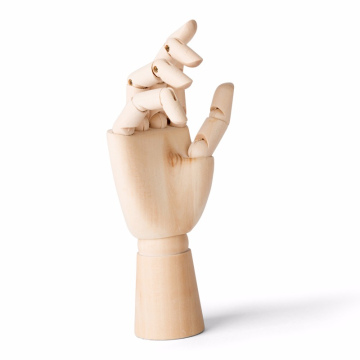Introduction to Donburi: The Comfort Food of Japan
Donburi, a quintessential dish in Japanese cuisine, offers a unique culinary experience that showcases the harmonious balance of rice and various toppings. At its core, donburi consists of a serving of steamed rice, which acts as a comforting base, often accompanied by a wide range of ingredients that can transform it into a hearty meal. The term "donburi" itself refers to both the dish and the bowl it is served in, indicating the close connection between the container and its contents.
The origins of donburi can be traced back to the Edo period in Japan when it emerged as a convenient meal for the working class. The development of this beloved rice bowl dish reflects the need for an easily consumable food that caters to busy lifestyles without compromising flavor or nutritional value. Today, donburi has evolved to encompass numerous styles and toppings, ranging from traditional ingredients like tempura, unagi (grilled eel), and gyudon (beef), to modern variations that incorporate seasonal vegetables and international flavors.
What truly sets donburi apart is its adaptability; the combination of rice and toppings allows for endless variations, making it a canvas for creativity. Not only does it satisfy hunger, but donburi also evokes a sense of nostalgia and comfort, heavily ingrained in Japanese culture. The communal aspect of sharing donburi dishes, whether at home or in restaurants, further solidifies its status as a staple in traditional and modern Japanese dining.
In exploring donburi, one delves into the heart of Japan’s culinary landscape, discovering how this simple yet profound dish continues to resonate with people of all ages, transcending mere sustenance to embody a rich tradition of flavor and comfort.
Rice, Toppings, and Tradition: A Donburi Food Trip in Japan
Discover the delightful world of Donburi, a beloved Japanese rice bowl dish that combines steamed rice with a variety of toppings. Originating from the Edo period, donburi reflects traditional and modern culinary practices across Japan. Explore regional specialties like Gyudon and Katsudon, learn about creative toppings and traditional preparation methods, and get tips for making donburi at home. This blog post celebrates the adaptability and comfort that donburi brings to diners of all ages, illustrating its importance in Japanese culture and cuisine.
Unagi Don: Exploring the Delights of Japanese Cuisine
Japanese cuisine has a long history of refinement and elegance, offering an array of dishes that blend simplicity with complexity. Among the many delightful offerings, one dish that stands out is Unagi Don, a traditional Japanese meal that celebrates the flavors of fresh eel. This culinary masterpiece is more than just a meal; it’s an experience that connects the diner with centuries-old culinary traditions. In this article, we will explore the origins, ingredients, and cultural significance of Unagi Don, diving deep into the essence of this beloved dish.
The History Behind Unagi Don's Creation
Unagi Don, which translates to “grilled eel on rice,” has a deep-rooted history in Japanese culinary culture. The dish is said to have originated during the Edo period, a time of relative peace and prosperity in Japan. As the country began to develop a more sophisticated approach to cuisine, dishes like Unagi Don became popular due to their simplicity and rich flavors. The culinary art of grilling eel perfectly, then pairing it with warm, soft rice, was a sign of both innovation and respect for traditional cooking methods. Over time, it became a staple in various Japanese regions, each adding their own unique touch to the preparation.
The preparation of Unagi Don involves more than just cooking eel. The culinary process includes the careful selection of the eel itself, which must be fresh and of the highest quality. After the eel is prepared, it is grilled over an open flame, brushed with a sweet soy-based sauce known as tare. The balance of flavors, texture, and aroma is what makes Unagi Don a culinary delight. It’s a dish that reflects the Japanese philosophy of simplicity and refinement, where the ingredients are allowed to shine without being overwhelmed by excess.
In addition to its popularity in Japan, Unagi Don has also found its way into various international culinary circles. The delicate flavors of the eel, combined with the tender rice, have made this dish a favorite among food enthusiasts worldwide. While many may view it as an exotic treat, its appeal lies in its authenticity and the careful attention to detail involved in its preparation. Unagi Don represents more than just a meal; it’s a living piece of culinary history that continues to captivate those who appreciate the finer things in life.
Unagi Don's Ingredients and Cooking Techniques
The ingredients that make up Unagi Don are relatively simple but require great skill to combine harmoniously. At the core of the dish is unagi, or freshwater eel, which is known for its tender texture and rich flavor. To prepare the eel, it must be cleaned, deboned, and grilled over a charcoal fire, a method that imparts a smoky aroma that enhances the overall taste. The grilling process is a key aspect of the culinary preparation, as it gives the eel a slightly crispy exterior while maintaining its tender, juicy interior. The tare sauce, a blend of soy sauce, sugar, and mirin, is then brushed onto the eel, caramelizing and adding a glossy finish.
The rice, a crucial element of Unagi Don, is typically short-grain Japanese rice, which is known for its stickiness and ability to absorb flavors. The rice is steamed to perfection, ensuring that each grain is soft, slightly sticky, and capable of holding the essence of the eel and tare sauce. When combined, the eel and rice create a balanced culinary experience where each bite offers a perfect harmony of flavors. The delicate taste of the eel contrasts beautifully with the soft rice, creating a dish that is both comforting and satisfying.
While the main ingredients of Unagi Don are consistent, the method of cooking and serving can vary depending on the region. In some areas of Japan, the eel may be grilled differently, with a focus on more intense charcoal flavor, while others may prefer a lighter grilling technique. The tare sauce can also differ in sweetness and saltiness, allowing for variations in taste. Regardless of the regional differences, the core of Unagi Don remains unchanged: it is a celebration of the natural flavors of eel, rice, and tare, elevated by the culinary techniques passed down through generations.
The Cultural Significance of Unagi Don
Unagi Don holds a special place in Japanese culture, not only as a favorite dish but also as a symbol of seasonal change and traditional values. In Japan, eel is often eaten during the summer months, particularly on the "Day of the Ox," a day that falls during the hottest part of the year. This tradition is rooted in the belief that eating eel helps to restore energy and vitality during the scorching summer heat. The culinary tradition of consuming Unagi Don on this day is part of a broader cultural understanding of food as both sustenance and medicine.
The preparation of Unagi Don is also tied to the Japanese value of patience and meticulous craftsmanship. Grilling the eel to perfection and preparing the rice in just the right way require an extraordinary level of skill and attention to detail. In many ways, making Unagi Don is a reflection of the broader Japanese philosophy of craftsmanship, or "monozukuri," which emphasizes precision and respect for the materials used. The dish itself is a reflection of the Japanese reverence for nature and the seasons, as it highlights the natural flavors of the ingredients in their purest form.
Beyond its role as a seasonal treat, Unagi Don also serves as a social dish. It is often enjoyed during gatherings or shared meals, bringing people together over a comforting and flavorful meal. The communal aspect of sharing Unagi Don adds another layer to its cultural significance, as food in Japan is often seen as a medium for strengthening bonds and fostering relationships. As such, Unagi Don represents not only a delicious culinary experience but also a deeper connection to the traditions and values that define Japanese society.
Unagi Don in Contemporary Global Cuisine
In the modern culinary world, Unagi Don has gained recognition beyond Japan, with chefs and food enthusiasts around the globe embracing the dish for its unique flavor profile and cultural significance. Japanese restaurants around the world serve Unagi Don, often adapting the dish to local tastes while maintaining its traditional roots. This globalization of Japanese cuisine has led to new interpretations of Unagi Don, making it more accessible to a wider audience while preserving the essence of the dish.
In some cases, the eel used in Unagi Don is substituted with other ingredients, such as grilled fish or vegetables, to accommodate dietary restrictions or preferences. While these variations may differ from the traditional version, they still embody the spirit of Japanese culinary creativity and adaptability. The concept of combining fresh ingredients with carefully crafted techniques remains at the heart of the dish, no matter where it is served.
The global appreciation for Unagi Don reflects a growing interest in Japanese food and culture, as more people seek to explore the flavors and traditions of this vibrant cuisine. Unagi Don is just one example of how Japanese culinary arts continue to influence and inspire chefs around the world. As more diners discover the joys of Unagi Don, this dish will likely remain a beloved part of the international culinary landscape for years to come.
How Unagi Don Captures Japan’s Culinary Essence
Unagi Don encapsulates the essence of Japanese cuisine: it is a dish rooted in tradition, rich in flavor, and crafted with a deep respect for the ingredients. Every element of Unagi Don, from the selection of the eel to the careful grilling process, reflects a commitment to quality and authenticity that is central to Japanese culinary philosophy. This dish highlights the importance of balance, where each ingredient contributes to the overall harmony of the meal.
What makes Unagi Don truly special is its ability to connect people with the land, the seasons, and the culinary techniques passed down through generations. It is a dish that speaks to the Japanese appreciation for nature’s bounty and the meticulous craftsmanship involved in preparing a perfect meal. When you eat Unagi Don, you are not just consuming food; you are experiencing a piece of history and a celebration of the Japanese way of life.
In the context of global cuisine, Unagi Don represents a bridge between cultures, allowing people from all corners of the world to experience a taste of Japan’s culinary soul. As more people discover this delectable dish, it will continue to be a symbol of Japan’s rich culinary heritage, bringing joy and connection through the simple pleasure of eating. Unagi Don is more than just a meal; it is an invitation to explore the deeper meanings of food and culture.




